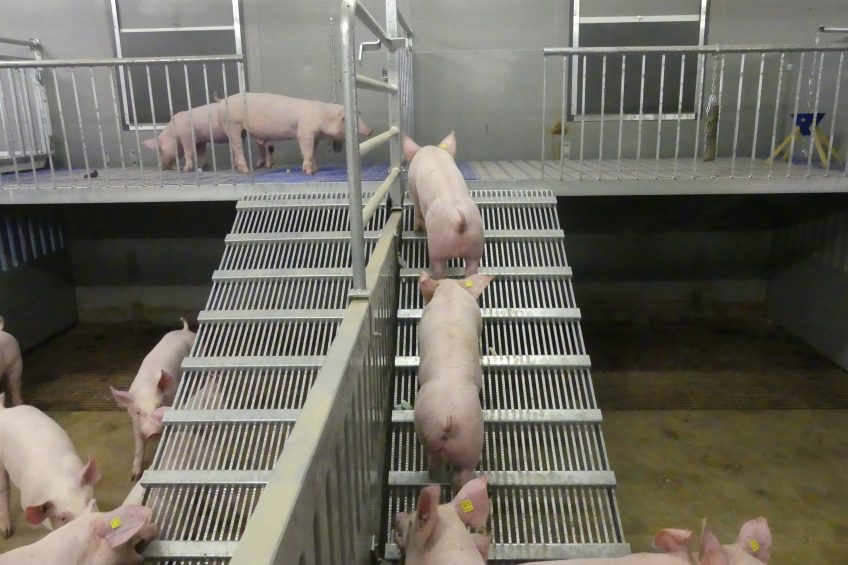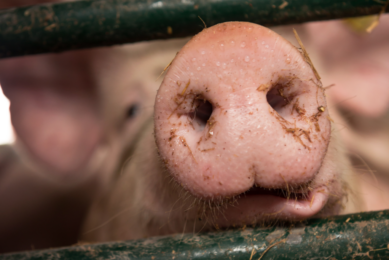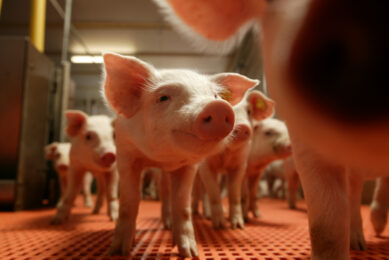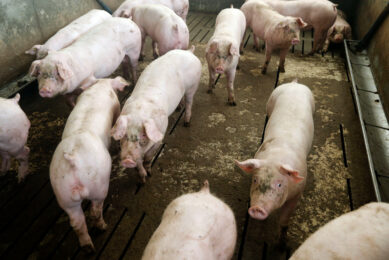There’s a future for plateaus in finisher pig houses

The application of so-called plateaus (extra levels) in weaner and finisher pig houses gets the green light for further use and development in the Netherlands after trials and experiences have yielded positive results.
Applying plateaus inside pig finisher pens can increase the surface by 25-40% and it also offers the opportunity for all kinds of pen enrichment. Therefore, in May, a new type of finisher barn was opened at Wageningen UR Livestock Research’s trial facility in Sterksel, the Netherlands. In this swine barn, several different types of plateaus have been included.
Plateau 2.0: A research project on plateaus
Opening this pig house is in fact the closure of a project called ‘Plateau 2.0’. Within this project, research was carried out on the exact type of housing system – trials which started as early as 2002. The main aim of the new Sterksel pig house is to demonstrate several varieties. Companies cooperating are Van Osch Uden, Nooyen, Proflex and Genugten Agri – and they can show interested pig farmers what these systems look like.
Effectively, the plateaus can increase living space from 0.8 m2 to 1.0 m2. This allows for several additions that can increase animal welfare, e.g. a closed (non-slatted) floor and enrichment possibilities like e.g. rooting material on top of the plateau. Additional costs for a plateau are about €100-€200/m2 in a finisher pen and €50-€100/m2 for weaners.

Approval from several sides
At the opening of the new pig house, the use of plateaus in pig houses was openly applauded by both the Dierenbescherming (a nationwide animal welfare organisation) as well as the Netherlands Ministry of Economic Affairs (which includes agriculture). Several tens of pig producers in the Netherlands have already applied plateaus in their farms – and they can continue to do so after 2018.

Research at Sterksel as well as at various other pig farms in the area revealed that finisher pigs do use the plateaus frequently. Only a 5% minority does not make the journey upstairs, and it’s not known exactly why. Seeing that the animals can go upstairs without any problem and seeing that it both offers a pen enrichment as well as an escape possibility, the animal welfare organisation agreed to plateaus as a solution to meet the minimum surface area for finisher pigs.
No negative effects on technical performance
Health or technical performance were not observed to be negatively affected. Practical experience has hinted towards a possible positive effect on the occurrence of tail biting.
Plateaus will have to meet a set of conditions, which have been written down in the document ‘Plateau 2.0’ (text only in Dutch). This includes size demands, use of materials and the slope.

What do plateaus look like in practice? Take a look at this farm
The system does come with several drawbacks in management – it does take for instance some extra time to collect the first set of animals when it’s their time to move to the slaughterhouse. In addition, animal check-ups as well as pen cleaning deserve attention. It is possible, however to prevent some of these problems by installing foldable stairs.











